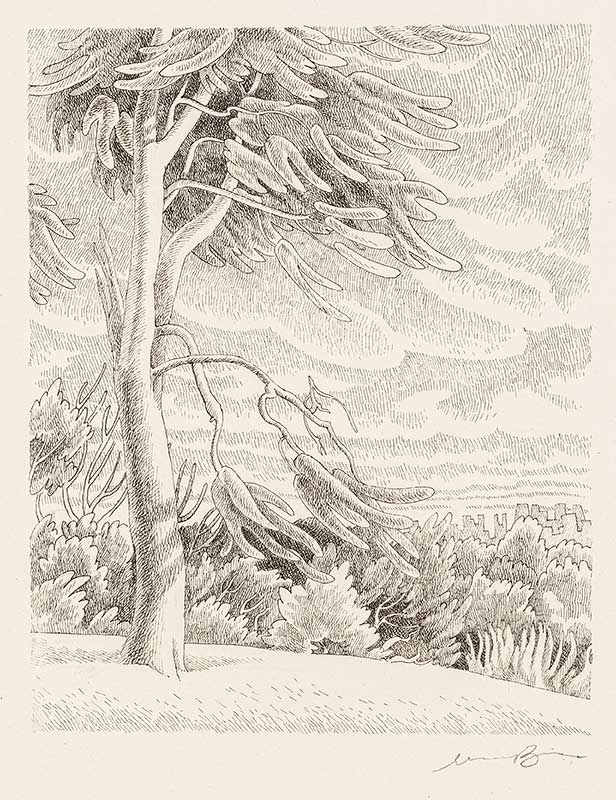
Madeleine Bialke, Hampstead Heath, 2024
Atop a hill, a soft breeze sets the leaves of a solitary tree to motion. Its boughs stretch outwards, gently hanging, casting shadows on the trunk. Down the slope, a vista of dense woodland fills the middle-ground; beyond, a glooming metropolis punctuates the skyline. No figures populate the scene, but, despite their absence, romance remains wrought in the pastoral setting.
Madeleine Bialke’s hand traces this scene, its movements and planes, with a quick and gestural graphic handwriting. Fine, delicate marks blend with broad, heavier lines; thick crosshatching often extends beyond outlines; clouds are deftly rendered with short flicks of the pen; dark highrises are represented with firm, straight lines, contrasting with the undulations of nature. It is, indeed, evocative of the expressive pastoral drawings of Renaissance artist Domenico Campagnola, or Marco Ricci in the eighteenth century, two Venetians who both specialised in creating drawn scenes of leafy idylls. The Italian word most often used to describe the styles of those artists is ‘sprezzatura’: ‘effortless beauty’. It is a word that could aptly describe Bialke’s style.
The artist’s drawing is immediately recognisable as falling within the canon of pastoral works on paper, a tradition which those Venetian draughtsmen did so much to cultivate. In drawing from Virgil’s Eclogues, artists of the Early Modern period often produced overtly romantic landscape scenes. Various topoi in Bialke’s work make this link to history clear: a hilltop, covered in grass, surmounted by a tree providing cool shade for would-be lovers, or for the music of Orpheus, the poetry of Corydon, as in the Eclogues; a verdant sprawl of woodland separating us from the prying eyes of civilisation, or indeed its toils. The artist invites us to imagine these events, and perhaps to envisage ourselves in the space, filling the absence of figures. We enter the fictive world, and make the romance latent there our own.
Bialke’s work is, in short, as much an image of Arcady as of Hampstead Heath. Therein lies what could be argued is the subject of the image. Here is an alien, yet familiar world; a place of delight (locus amoenus), a setting for sweet diversions (dulces lusus); here is a space for love, for music, for mild-eyed repose. It is a romance made all the more palpable by the dark buildings rising out of the horizon, acting as the foil to our safety under the leaves. It is, in a sense, a soft invective against London, a celebration of simplicity, of care-free love. Virgil’s words of Eclogue X come to mind, spoken through Gallus to Lycoris, his lover: ‘Here are the cold springs, Lycoris, here are the soft meadows, here are the woods: here is eternity itself to be spent with you’
(By Arlo Brown)
